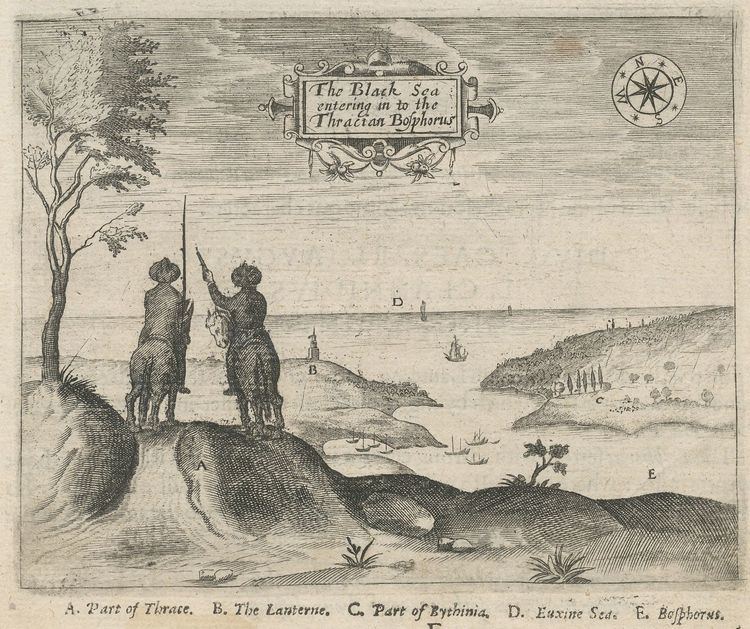Name George Sandys Role Poet | Parents Edwin Sandys | |
 | ||
Books A Relation of a Journey Begun An: Dom: 1610:Foure Bookes Containing a Discription of the Turkish Empire, of AEgypt, of the Holy Land, of the Remote Parts of Italy, and Ilands Adioyning | ||
George Sandys ( ; 2 March 1577 – March 1644) was an English traveller, colonist, and poet.
Contents

Life

He was born in Bishopsthorpe, the seventh and youngest son of Edwin Sandys, archbishop of York. He studied at St Mary Hall, Oxford, but took no degree. On his travels, which began in 1610, he first visited France; from north Italy he passed by way of Venice to Constantinople, and thence to Egypt, Mt. Sinai, Palestine, Cyprus, Sicily, Naples, and Rome. His narrative, dedicated, like all his other works, to Charles (either as prince or king), was published in 1615, and formed a substantial contribution to geography and ethnology.
He also took great interest in the earliest English colonization in America. In April 1621 he became colonial treasurer of the Virginia Company and sailed to Virginia with his niece's husband, Sir Francis Wyat, the new governor.
When Virginia became a crown colony, Sandys was created a member of council in August 1624; he was reappointed to this post in 1626 and 1628. In 1631, he vainly applied for the secretaryship to the new special commission for the better plantation of Virginia; soon after this, he returned to England for good.
In 1621, he had already published an English translation, written in basic heroic couplets, of part of Ovid's Metamorphoses; this he completed in 1626; on this mainly his poetic reputation rested in the 17th and 18th centuries. Its 1632 edition, featuring extensive commentaries written by Sandys, provided an allegorical reading of Ovid's text. He also began a version of Virgil's Aeneid, but never produced more than the first book. In 1636, he issued his famous Paraphrase upon the Psalms and Hymns dispersed throughout the Old and New Testaments, he translated Christ's Passion from the Latin of Grotius, and, in 1641, he brought out his last work, a Paraphrase of the Song of Songs. He died, unmarried, at Boxley, near Maidstone, Kent, in 1644.
His verse was praised by Dryden and Pope; Milton was somewhat indebted to Sandys's Hymn to my Redeemer (inserted in his travels at the place of his visit to the Holy Sepulchre) in his Ode on the Passion.
Sandys' travel narrative appeared as The Relation of a Journey begun an. Dom. 1610, in four books (1615). This remained a standard account of the Eastern Mediterranean, twice mentioned, for instance, by the English naval chaplain Henry Teonge in his diary of a voyage in 1675.
Family
His brother Edwin Sandys (same name as his father) was a politician and an influential member of the London Virginia Company. George Sandys was the uncle of Richard Lovelace (1618–1657), an English poet in the seventeenth century.
